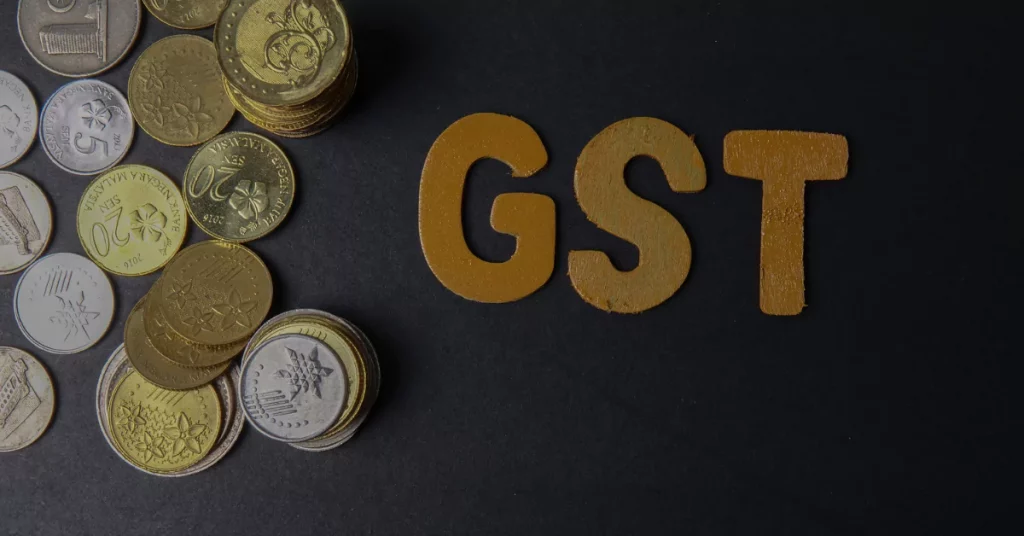Hi three, This article is about GST and Indirect Tax. In this article, We are going to clear all questions related to GST. If you are a business owner, then you heard about GST. So, What is GST?
Before understanding GST, You should understand Indirect Taxes. So let’s talk about Indirect Taxes.
Indirect taxes apply to goods and services during production and sales. These taxes are hidden in the prices that we pay for things.
Key Takeaways
- Understanding Indirect Taxes: Taxes on goods and services during production and sales. They help the government make money and influence consumer behavior.
- Challenges and Needed Changes: Taxes are too complicated and need simplification. Tax evasion is a problem that needs better solutions. Taxes should be fair and balanced to support businesses.
- Introduction to GST: GST replaces multiple old taxes. It simplifies tax management for businesses and consumers.
- Objectives and Implementation of GST: GST aims for a single tax system nationwide. It was implemented in India in 2017 after years of discussion.
- Impact on Businesses and Consumers: Businesses find tax compliance easier and revenue increases. Consumers benefit from lower prices and organized shopping experiences.
- Features of GST: GST is applied at the point of consumption. Applies at every stage of goods and services production and sale.
- GST Slabs and Rates: Rates vary from nil (0%) to 28% for different goods and services.
- Administration and Compliance: Entities like the GST Council and CBIC manage GST rules. Businesses must register and file returns to comply with regulations.
- Changes in Indirect Taxes Pre and Post-GST: Old taxes like Central Excise and VAT were merged into GST.
- Significance of GST: GST simplifies taxes, and promotes fairness, and transparency for all.
Why do They Matter in the Economy?
- Making Money for the Government: The government makes a lot of money in the form of Indirect Taxes. This money helps the government with the construction of roads, schools, and hospitals.
- Changing How We Behave: Governments can use these taxes to change our behaviors. For Example :
- Increasing the price of cigarettes can people smoke less.
- Making essential things affordable.
- Helping the Economy Stay Stable: These taxes can also help to control the pricing. Like when prices are rising quickly. Then, the government can increase taxes to slow down spending.
Challenges and What Needs to Change:
1. Too Confusing: Our taxation system is too complicated. It should be simpler so everyone can understand it.
2. People Dodging Taxes: Due to its complexity some people try to avoid taxes. We need to find better solutions to stop it
3. Making Businesses Competitive: Some taxes are too high. It is hard for businesses to compete. We Need to find a balance to help the business grow.
4. Making Sure Everyone’s Treated Fairly: Some taxes are not as good for poor people as rich ones. We need to change this so everyone gets a fair deal.
In short, Indirect taxes are a big part of the taxation system. Now let’s talk about GST
What is GST?
GST is a single tax system added to goods and services. It replaces many old taxes like excise duty and VAT. It makes taxes simple and more understandable.
Historical Background:
- Firstly, France introduced GST in 1954. Now over 160 countries use it.
- In India, after talking about GST over 20 years ago. Finally, it happened in 2017.
Objectives of GST:
1. One Nation, One Tax: GST is a single tax with easy-to-understand
2. Replacing Old Taxes: It has replaced old taxation systems like Excise duty and VAT
3. Stopping Tax Piling Up: We have to pay tax once, not over and over
The Road to GST Implementation:
IN 2000, a special committee started talking about GST. The discussions take almost 17 Years. Then finally GST Became law in 2017.
Impact on Businesses and Consumers:
1. Businesses:
- Easier Taxes: Due to simplification of GST. It is easy for businesses to pay taxes and follow the rules
- More Money for the Government: GST helps the government to get more money. Because of its simplicity, more people pay taxes.
- People Liked Organized Stores: People started their shops and businesses easily.
- Better Delivery: Delivery of goods around the county became soother with GST.
2. Consumers:
- Some Things Got Cheaper: Many things became more affordable because of GST.
- People Knew More: People learned more about taxes and had better choices during shipping.
- Organized Shopping: People can organize their shops more because they know more about taxes.
Understanding Goods and Services Tax (GST) Features:
1. Tax Where You Use It: GST is tax applicable on where you use or consume goods or services.
2. Tax at Every Step: GST applies at every steps like making and selling goods. From when they are made to when they are bought.
3. Getting Credit for Taxes Paid: Business have the opportunity to reclaim GST on goods. That they use to make their product. This helps avoid paying taxes multiple times on the same things.
4. Some Things Aren’t Included: Alcohol, Petrol, and electricity are not included in GST. They still follow their old taxes
GST slabs and their corresponding rates:
Certainly! Here’s a table summarizing the GST slabs and their corresponding rates:
| GST Slab | Rate | Examples of Goods and Services |
|---|---|---|
| Nil (0%) | 0% | Milk, Eggs, Curd, Unpacked Foodgrains, Fresh Vegetables |
| 5% | 5% | Sugar, Tea, Edible Oils, Domestic LPG, Cashew Nuts |
| 12% | 12% | Coal, Raisins, Footwear (priced below Rs. 500), Apparels (priced below Rs. 1000) |
| 18% | 18% | Spices, Agarbatti (Incense Sticks), Roasted Coffee Beans, Coir Mats and Floor Coverings |
| 28% | 28% | Mishti/Mithai (Indian Sweets), Packed Paneer, Coal, Apparel (priced above Rs. 1000) |
Remember that these rates may vary based on specific circumstances and government notifications. For a comprehensive list, you can explore the HSN code & GST rates finder. 🌟

Understanding GST Administration and Compliance:
1. Key Entities:
- GST Council: It is a group of official people that decide on the GST rule. They make sure GST is the same everywhere in India
- Central Board of Indirect Taxes and Customs (CBIC): This is the central group that manages GST and other taxes. Their responsibilities are everyone follows the GST Rules and pays their taxes.
- State Tax Authorities: Each state has also its group that manages GST locally.
2. Registering for GST:
GST registration is mandatory for businesses whose annual turnover exceeds RS. 20 lakh, depending on the state and type of supplies.
To register GST Follow the steps-
- Visit the GST portal (gst.gov.in).
- Click on Services, then Registration, and select New Registration.
- Provide details such as business name, PAN, email, and mobile number.
- Receive a Temporary Reference Number (TRN).
- Complete Part-B details within 15 days.
3. Filing Returns and Following Rules:
- Businesses should keep a record of everything they buy and sell.
- They have to file daily reports to show their business activities.
- If you don’t maintain records and do not follow the rules. Then it leads to a big problem.
4. Why Keeping Good Records Matters:
- Records make it easier to do business and be aware of rules.
- They help to reclaim the money back which is spent on taxes.
- It also helps build trust and make better decisions in the future.
Exploring Indirect Taxes Before and After GST:
1. Central Excise:
- What it was: Tax on goods made in India.
- Who collected it: The central government.
- How it was: Had different rates and rules for different goods.
- After GST: Merged into GST, making things simpler.
2. Service Tax:
- What it was: Tax on certain services provided in India.
- Who collected it: The central government.
- How it was: Had different rates and rules, making it complicated.
- After GST: Became part of GST, making taxation uniform.
3. Value-Added Tax (VAT):
- What it was: Tax on goods sold within a state.
- Who collected it: State governments.
- How it was: Different rates for different goods.
- After GST: Included in GST, making taxes the same across the country.
Why GST Matters:
- Simplicity: GST makes taxes easier to understand by merging many different ones.
- Consistency: It makes taxes the same everywhere in India.
- Helping Businesses: GST helps businesses by allowing them to get credit for taxes they’ve already paid.
- Making Things Clear: With GST, it’s easier to see where taxes go and how they’re used.

In summary, GST has made the tax system easy to understand and simple. By replacing multiple taxes. It helps both businesses and consumers in the best way. We hope after reading this blog post, You have enough understanding about GST. We also help you to file your taxes on time. And be updated with the latest tax updation. Stay tuned with Indiataxfile. Thanks


